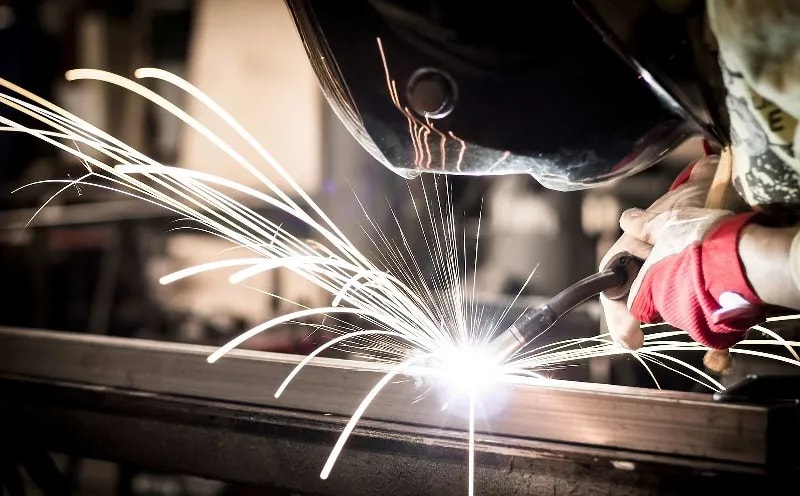How To Become a Military Support Welder
Ever thought about pursuing a welding career in the military? Click here to learn all about becoming a military support welder.
Key Points
- Gas metal arc welding (GMAW), also known as MIG welding, is a commonly used welding technique.
- Burnback is a common issue that can occur during the GMAW process, where the arc climbs up the wire and fuses it to the contact tip of the welding gun.
- Burnback can be caused by faulty grounding, crowding the workpiece, incorrect tip/wire size, slow wire feed speed or poor-quality filler or tip material.
- If burnback occurs, it is recommended to replace the damaged contact tip rather than trying to reuse it.
- To prevent burnback, check the wire feed speed, inspect the tip for any trouble spots, ensure proper spacing between the torch and the metal and invest in higher-quality materials.
There are many different kinds of welding techniques, each with their own features and processes. Gas metal arc welding (GMAW), also known as metal inert gas (MIG) welding, is one of the most commonly used.
In the GMAW process, an electric arc is formed between a continuous solid wire electrode and the metal being worked on. This helps close the electric circuit and apply heat, causing melting and fusion between the electrode and the metal. The electrode travels through the electrified wire and the welding gun, and it is protected by a shielding gas that keeps contaminants at bay.
One issue that can occur during the GMAW process is called burnback. What is burnback in welding? Burnback happens when the arc that is generated climbs up the wire and fuses the wire to the contact tip of the welding gun.
Burnback can be a common occurrence with MIG welds. It’s important to understand what burnback is and what can cause it to prevent it from happening. Keep reading to find out more.
Burnback can be used to describe a few different things in regard to welding.
“Burnback control” refers to a setting that can be found on certain welding machines. This setting is used to adjust how long a wire is electrically energized after the wire has stopped being fed. If this control isn’t set properly, it can cause a wire to stick to the work piece.
While this article covers the topic of MIG welding burnback specifically in terms of a wire burning back into a contact tip on a welding gun, becoming familiar with burnback adjustment settings is important if you have them on your machine.
Identifying the source of what is causing burnback is critical so you can take care of it and get back to working on a project!
Potential causes of MIG welding burnback include:
If welding burnback happens to you, first come to terms with the fact that you will be losing a contact tip. It’s not worth trying to scrape it out to try and reuse it. Replacing a burnback-damaged tip requires you to remove the nozzle and tip, which might be fused to the wire. Then you’ll need to cut the wire before you install a new tip and replace the nozzle.

Familiarizing yourself with the common causes of the issue can help prevent it from occurring, saving you time and money spent on the process of replacing a damaged contact tip.
As mentioned previously, some of the causes of burnback are quite common and relatively simple to fix. By taking measures to prevent MIG welding burnback, welders can achieve higher efficiency, better quality welds and a safer work environment, ultimately leading to more successful and cost-effective welding operations. If you’re wondering how to prevent burnback, take a look at some of these tips:
Check the wire feed speed and voltage settings and make sure they are correctly matched for the type of welding and material you are working with. Incorrect settings can cause the wire to burn back.
Keep the appropriate distance between the contact tip and the workpiece, known as the stickout. Typically, a stickout of about 3/8 inch to 1/2 inch is recommended, depending on the welding process.
Regularly inspect and clean the contact tip to prevent blockages. A clogged or dirty contact tip can cause inconsistent wire feeding, leading to burnback.
Adjust the wire tension correctly. Too much tension can lead to feeding problems, while too little can cause the wire to slip.
Maintain the correct angle and position of the welding gun relative to the workpiece. This can help ensure consistent wire feed and reduce the risk of burnback.
If you’re getting into welding as a hobby or even considering it as a career, attending trade school can help equip you with the education and hands-on training you need to master several welding processes.
The Welding Technology program at Universal Technical Institute (UTI) provides training in the four major types of arc welding, which include GMAW, shielded metal arc welding (SMAW), flux-cored arc welding (FCAW) and gas tungsten arc welding (GTAW). In just 9-10 months, you’ll have the skills you need to prepare for a career in the industry.1
Along with learning welding techniques, courses offered in the program cover safety, inspection and defect testing. These topics can come in handy when dealing with the issue of MIG welding burnback and burnback prevention.
Want to find out more? Request more information about training today and see how you can start taking steps toward your future.
Universal Technical Institute of Illinois, Inc. is approved by the Division of Private Business and Vocational Schools of the Illinois Board of Higher Education.